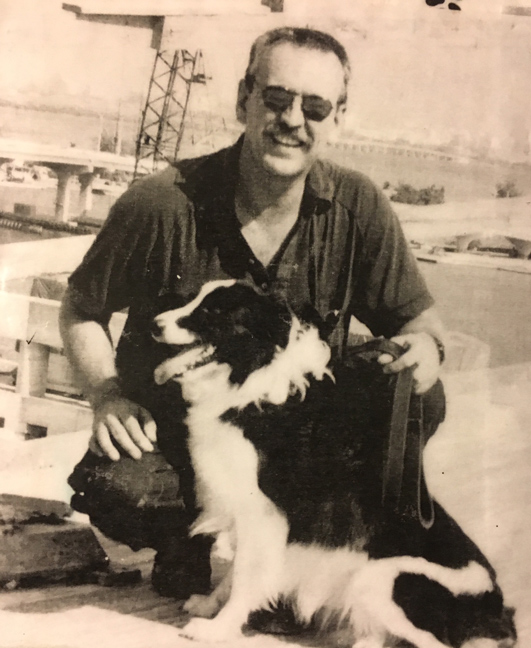
David Latimer and his first arson dog, Kip, on top of the Miami Heat Arena, during an investigation into a fire there during construction in 1998. PHOTO: David Latimer
Last week, we talked about how over control can prevent the dog from being an effective team member. Today, let’s focus on how we can encourage your dog to be a more important part of the team, and use its sense of smell and problem-solving ability.
We discussed that in response to the command to engage the search for odor, the dog undertakes a two-fold process that involves both a behavioral and a cognitive response. When we enter a room or area to be searched, we give the dog the command to search. The dog’s observations are that, if you engage it in a search, it will likely find odor in the area you indicate. This knowledge helps keep the dog motivated to search room after room for odor.
To fully use what the dog has to offer, we have to allow the dog to make mistakes once in awhile, at least during training, without it being concerned about being punished for doing so. Scent detection is not like obedience and other activities, where we can measure the dog’s responses by observation. Odor detection is not something we can evaluate effectively until the search is complete, and we look in the area indicated by the dog to see whether the target is actually present.
In obedience, the mantra of “perfect practice makes perfect work” is applicable. In obedience, we can correct for mistakes and encourage the dog to perform behaviors with perfection. But corrections in scent detection can cause more harm than good, since we can never know exactly what the dog is smelling when we correct.
If we correct during an odor exercise, we run the risk of penalizing the dog for making an effort. It may see the correction as meaning that it should avoid the activity of sniffing or, if it happened to be sniffing target odor when the correction is applied, it may even seek to avoid contact with the target odor in the future.
In scent detection, we must show the dog that if it properly applies its problem-solving capabilities and uses its sense of smell to find the odor source, it will be rewarded. This requires that we use the principle of positive reinforcement to motivate the dog, and show the dog that we trust it to do so. If we don’t allow the dog to make these choices without fear of punishment, it may come to believe that it must have all its decisions approved by the handler. Once this happens, the dog can cease to use its sense of smell and problem-solving ability.
Leave A Comment